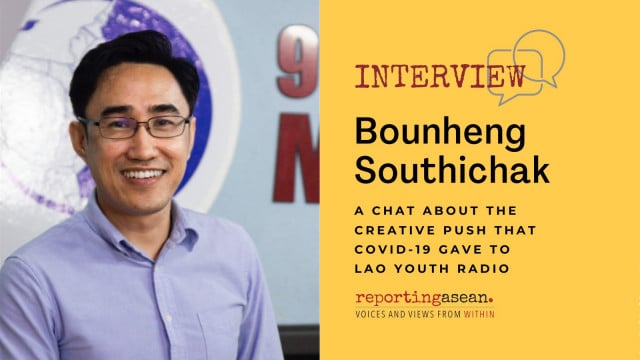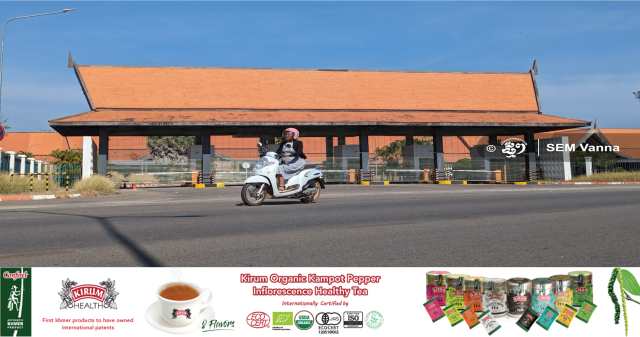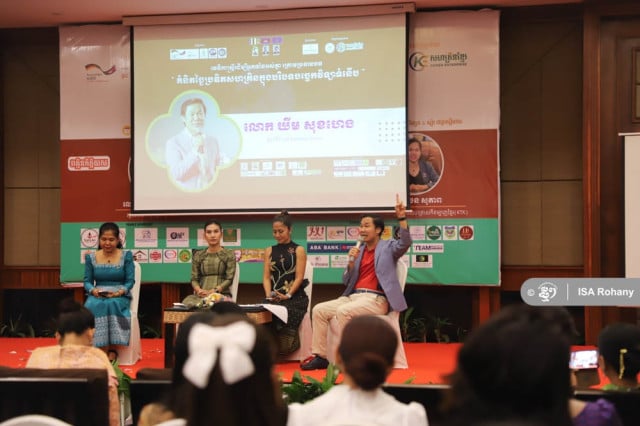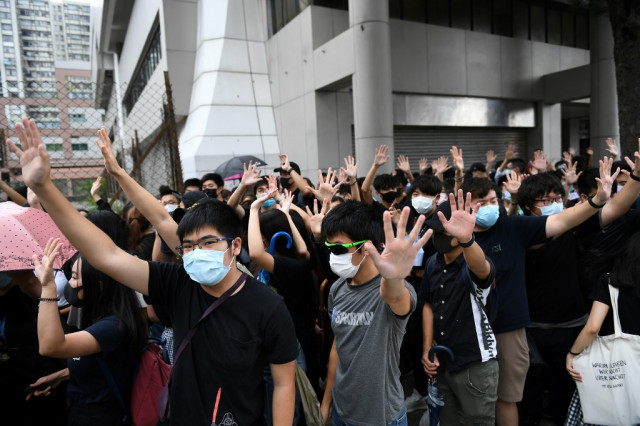Lao Youth Radio: A Station That’s More than Radio

- Reporting ASEAN
- March 18, 2021 10:09 AM
‘Short and snappy’, ‘visual’, ‘content-oriented’ and ‘mobile-friendly’ are words that Bounheng Southichak, managing director and founder of Lao Youth Radio, commonly uses these days when he talks about the products that the station’s team aims for.
These come from the lessons around innovation that the station has learned during the COVID-19 pandemic, which brought a lot of bad news to the news media everywhere but has also provided a creative push to many.
“It (the pandemic) opened new doors for me,” Bounheng says, describing how the radio station became more than ‘just’ a radio station and grew into a wider identity – that of an online media outlet followed by Lao audiences today who are comfortable with crossing media formats such as audio, text and images, and video.
In this chat with Reporting ASEAN’s Vannaphone Sitthirath, Bounheng says the station’s team got to know its audiences better and followed their cues on what works for them.
To explain COVID-19 (Laos has reported a total case count under 50 and no deaths as of March 2021), Lao Youth Radio went into making infographics. The number of its followers on Facebook spiked during COVID-19 and as of mid-March 2021, has more than 315,000 followers. More than 49%, or 3.6 million of the country’s 7.33 million people, use social media.
Bounheng says he gets inspiration from the “bright ideas” of his younger staff. “For the young and young-at-heart listeners” in Vientiane capital is how Lao Youth Radio describes itself. Most of its 30 disc jockeys are under 35 years old and about half are women, adds Bounheng, who set up the station in 2015 in a collaboration with the Lao Youth Union.

Reporting ASEAN: How was the COVID-19 situation for Lao Youth Radio like, earlier on in the pandemic last year?
Bounheng: It was a very tough time for everyone. During the lockdown, the radio station could not be locked down. Instead of 6 am to midnight, we reduced airtime from 6 am to 10 pm. Normally we have some invited guests come for interviews discussing various topics, but we cannot do that. Also, we lost some sponsorship and we had a large reduction of clients who suffered from the economic crisis. We had to keep all staff because during this tough time, we have to help each other.
However, (apart from) the dark side, we have the light side. Lao people spent more time on social media during the lockdown. Lao Youth Radio received a big jump of people following the Facebook page, from 150,000 to more than 300,000 followers. People were so interested in COVID-19 stories.
We realized that many Lao people like to read something short and snappy. We trained our team to be able to turn complex information into visual data which is easy to digest. When the graphic elements are good and those data are easy to understand and digest, people start to share the information quickly. We are very happy to see that. It means the information created is useful.
You hired more people despite COVID-19 being such a hard time. How did this come about?
Since we believe that social media has a big influence, we needed more data and more information to feed our Facebook page. Therefore, we hired three more people, who are all journalists, working part-time for us. These people can provide relevant information as they already have good journalistic skills. We trained them how to turn complex information into visual graphics and images which are understood by young audiences and become mobile-friendly.
How did Lao media cope with the COVID-19 situation and how has it survived so far?
Instead of competing (with) each other, I think it is better for media to collaborate and work together. Since early last year, I have tried to create a good network and communication with other media agencies. For example, we share data or images with each other. I think it's about mutual benefit. We should collaborate with NGOS, academics or researchers who can provide useful information and statistics.

How about the need to be fast with the news, given the need during the pandemic?
During COVID-19, the flow of information, and how people send and share information, was so fast. Of course it is important to distribute news quick, but to make it reliable is much more important. We have to be careful about fact-checking. It was very dangerous to publish wrong information.
As media workers, we have to find what the hot issues are about, what issues are impacting the society most and what they (public) are talking about most. We cannot ignore a situation that is popular or the issue that the society is interested (in). The media must provide correct information. We cannot add extra color in the stories (just) to make them look nice. Apart from good journalistic skills, when it comes to online media, journalists should understand about graphic design, including (doing) layout and infographics, to attract audience attention.
Last point - I encouraged my team to write a more specific story rather than a general, surface one. It is important to investigate and go deep. Readers seem to be interested in a story with a different perspective.
How did the Lao media’s transition to online or digital work get affected by the pandemic?
All the traditional media have already started to change in certain circumstances and levels. Many traditional media outlets focus more on the online platform. TV and radio stations have started to produce short video clips. Although there are some limitations for Lao media to report issues openly, there are still a lot of information the media can work on and can use scientific research or data to support.
One thing clear is that the media landscape will not be the same anymore. Therefore, I think it is nice to try something new even though we (could) fail. (Or) it could work very well and that is going to bring many benefits to us. For our radio, we always adjust our programme and content. We cannot use the same format for long because we know that the attention (span) is not the same. You drink the same coffee, the same brand all the time (and then) probably you see others doing something, and you want to try something new.
Has the pandemic opened any new doors for the radio station, allowed you to discover something you didn’t know before?
It opened new doors for me. During COVID-19, I started to think of something good for expanding the media network and more importantly, how more people could be involved in this initiative. COVID-19 helped me realize that we have to open up our hearts and our collaboration with others. In the future, I would like to organize many more events to get people to know about the media. It is good to know that people are listening to our radio channel, but involving people in our work would be much better.
What have you found out about your audience?
People are more interested in the information itself or content-oriented news now. In the past, people were more interested to see shows with beautiful actors or presenters but now, what matters is the content or the information that impact and benefits people, that people want to share. It is important to develop media content that gives people something.
What skills do you think your staff need to have from hereon?
I think they have to be more analytical. They have to see things in different perspectives. Sometimes they already have very good information, but don't know how to put this into a story and an infographic piece. We should also develop communication skills for the radio staff so they can explain clearly about issues like PM 2.5 and COVID-19. I believe in young people. I would like them to learn from experience, and use the mistakes they made and try to develop themselves.
What ideas would you want to try out in the future?
We want to have podcasts as well. Podcasts in Thailand and in many countries are quite successful. I think we can make Lao podcasts better in the future. This could be another change or new thing for Lao media.
What changes would you like to see in Lao Youth Radio and Lao media?
I would like to radio station itself to be a training center. We would like to provide training on social media or radio programmes. For example, we would like to help farmers in Laos know how to create videos. We would like people who want to set up a shop to know how to sell things online, or how to create a simple poster to promote their products. We want to support and set up a young journalists’ club. We already have the Lao Journalists Association, but would like something that is not too formal.
(This feature is part of the #fightheinfodemic series of Reporting ASEAN.)















